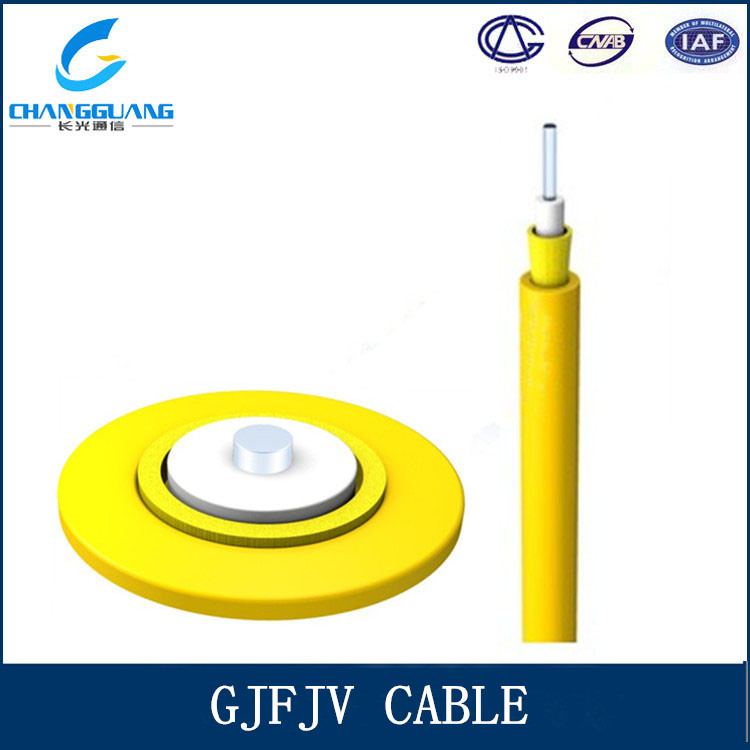Location:Home > News >
Single Mode Fibre Optic Cable
The Definition of SIngle Mode FIber Optic Cable
Mainly by the core, a cladding and a coating layer; the core is made of highly transparent material; slightly less than that of the cladding fibers [1] of the core, resulting in an optical waveguide effect, so that the majority of the electromagnetic field is bound in the core transmission; the role of the coating layer is to protect the optical fiber from mechanical abrasion and erosion of water vapor, while increasing the flexibility of the optical fiber. In the outer coating layer, there is often added a plastic jacket.
Mainly by the core, a cladding and a coating layer; the core is made of highly transparent material; slightly less than that of the cladding fibers [1] of the core, resulting in an optical waveguide effect, so that the majority of the electromagnetic field is bound in the core transmission; the role of the coating layer is to protect the optical fiber from mechanical abrasion and erosion of water vapor, while increasing the flexibility of the optical fiber. In the outer coating layer, there is often added a plastic jacket.
Fiber raw materials by the same below, the optical fiber can be divided into the following types:
(1) silica-based optical fiber
(2) multi-component glass fibers
(3) Plastic cladding fiber
(4) plastic optical fiber
Depending on the circumstances of the refractive index profile optical fiber cross-section classification, it can be divided into step-index type optical fiber and graded index type (also known as gradient index type). For step-index fiber, the refractive index in the core distribution is uniform, mutations occur at the interface between the refractive index of the core and cladding; and for a graded-index optical fiber, the refractive index changes continuously in the core. n1> n2 (the refractive index of the core refractive index n1 n2 cladding) is a necessary condition for fiber optic guided lightwave transmission in the core, for step-index fiber is concerned, it can make waves in the core and cladding cross total reflection at the interface is formed, guide waves propagate forward along the core; the graded index fiber is concerned, it can produce a continuous light refracted through the fiber axis are formed similar to a sine wave in the core of the light rays, light wave guide forward propagation along the core.
According to the number of optical fiber transmission mode classification, can be divided into fiber multimode fiber and single-mode fiber. Under certain operating wavelength. Multi-mode fiber is capable of transmitting dielectric waveguides many models, and single-mode fiber transmission only the fundamental mode.
Multimode step index profile optical fiber can be graded index profile; use of a step index singlemode fiber profile. Thus, in general may be used quartz fiber multimode step-index fiber, multimode graded index and single-mode fiber step-index fiber three.
This electromagnetic wave propagation in the optical fiber belongs to medium circular waveguide, the light at the interface of the medium total reflection of electromagnetic waves is limited in the medium, known as guided waves or guided mode. Given waveguide and the operating wavelength, there are a variety of incident cases satisfy the total reflection condition called different modes of guided waves. In the transmission mode is divided into multi-mode fiber and single-mode fiber. Multi-mode fiber can transmit several patterns, and single-mode fiber for a given operating wavelength can transfer a pattern.
When the optical fiber is the normalized frequency V is smaller than the normalized cutoff frequency Vc, single mode transmission can be achieved, that only the fundamental mode optical fiber transmission, the rest of the high-order mode are all turned off. That is, in addition to parameters such as core radius of the optical fiber, the numerical aperture must meet certain conditions, to achieve single-mode propagation of the light wave must grow to a certain value, namely λ≥λc, this value is called a single-mode fiber cut-off wavelength .
Cutoff wavelength λc meaning that can make single-mode optical fiber transmission minimum operating wavelength of light. That is, while other conditions are met, but if the light wave grow cutoff wavelength for single-mode fiber, single-mode transmission is still not possible.
Further, the distance single-mode signal loss than multimode small. During the first 3,000 feet distance, multimode fiber may lose 50% of its LED light signal intensity and single-mode at the same distance only lost 6.25% of its laser signal.
Bandwidth potential of single-mode makes it the only choice for high-speed and long-distance data transmission. Recent tests show that over one single-mode fiber can transmit 64 channels of 40G Ethernet up to a distance of 2,840 miles.
In security applications, select multimode or singlemode most common determining factor is distance. If only a few miles, the preferred multi-mode, because LED transmitter / receiver is much cheaper than the single-mode laser needed. If the distance is more than 5 miles, the best single-mode fiber. Further issues to be considered is the bandwidth; if future applications may include large bandwidth data transmission signal, then single-mode is the best choice.
English interpretation
Single-mode fiber (Single? Mode Fiber, SMF) or called sm


Get in Touch
+86-21-3996-3837
alex@changguangchina.com
+86-15216725374


